|
Click here for a Bandelier Bird Checklist 
Photo by Sally King WESTERN TANAGER (Piranga ludoviciana) Printable Western Tanager Fact Sheet (PDF) 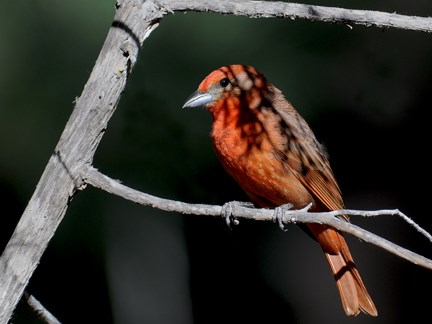
Photo by Sally King Wingspan 12.5" Although not as common as the Western Tanager, can be seen in the riparian area near the visitor center and on the Falls Trail. Male is overall red with olive-tinged wings. Female is mostly yellow with olive-tinged wings. 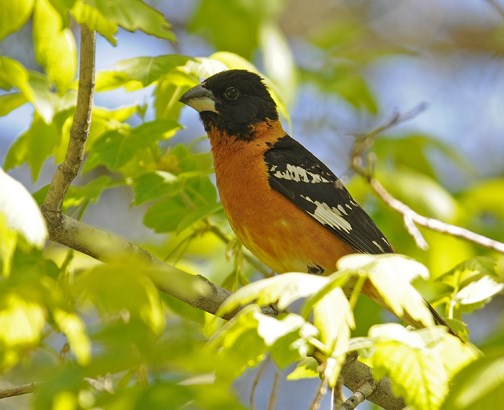
Photo by Sally King Wingspan 12.5" Males are black, orange, yellow, and white. Females have similar coloration with the black tending more to brown. Common in Frijoles Canyon. Can be pesky at the Cottonwood Picnic Area, as they tend to beg for food. PLEASE DON'T FEED THEM. 
photo by sally king 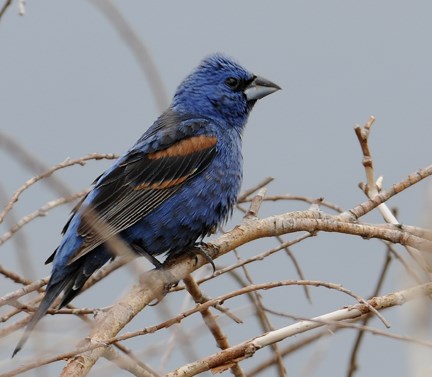
Photo by Sally King Wingspan 11" Uncommon but has been seen both in the main Frijoles Canyon area as well as at the Rio Grande. Male is striking with bright blue plumage, orange wing bars, and a thick beak. Female is reddish brown with the same thick bill. 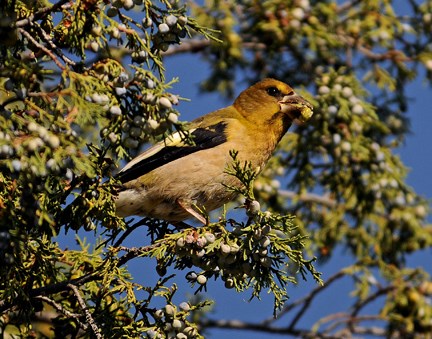
Photo by Sally King EVENING GROSBEAK (Coccothraustes vespertinus) 
photo by sally kine 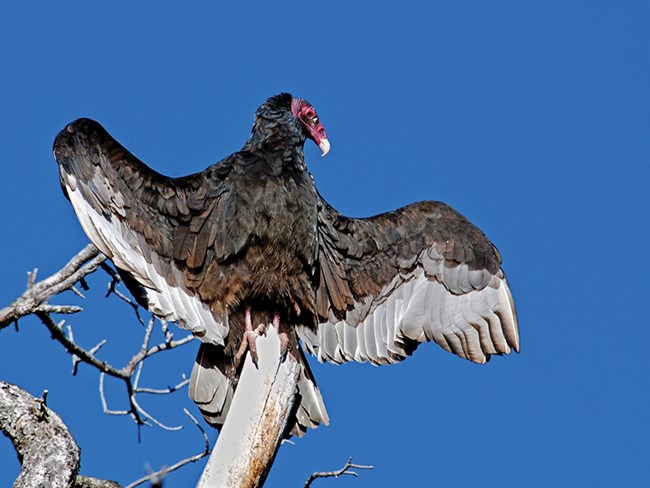
Photo by Sally King TURKEY VULTURE (Cathartes aura) Printable Turkey Vulture Fact Sheet (PDF) 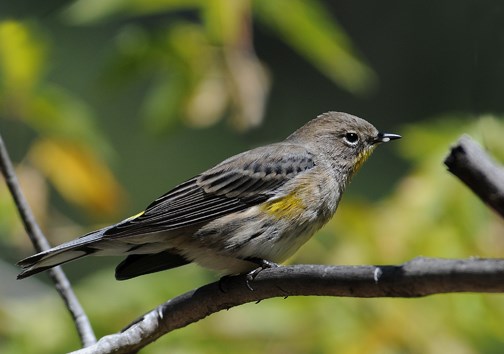
Photo by Sally King Wingspan 9.25" The most easily seen warbler in the park, can be found in most of the riparian zones. Often arrives back quite early in the spring. 
Photo by Sally King Wingspan 7.75" Moderately common in the riparian zones and on the mesatops. Flits around in tree branches looking for food. 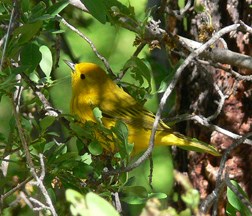
NPS Photo by Sally King Wingspan 8" Both males and females have bright yellow plumage with the male having red-orange streaks on its breast. Somewhat common in the riparian zones. 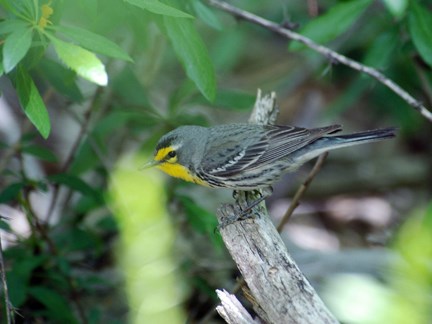
Photo by Sally King Wingspan 8" Somewhat common in the riparian areas of the park. 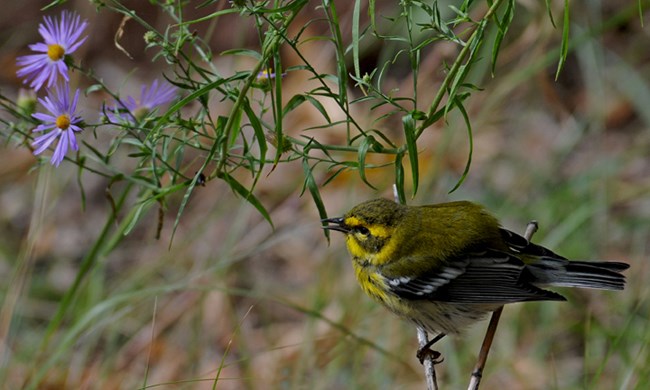
Photo by Sally King Wingspan 8" Seen occasionally during migration, usually in the riparian areas of the park. 
Photo by Sally King Wingspan 10" Common especially in the riparian areas of the park. Nests and raises young here. 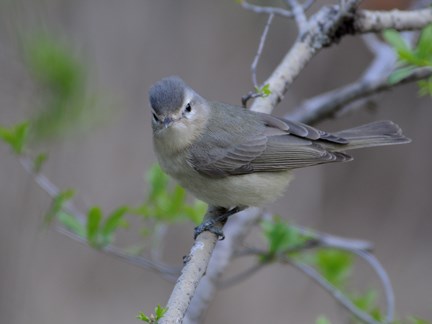
Photo by Sally King Wingspan 8.5" Common in the riparian areas of the park from late spring through early fall. 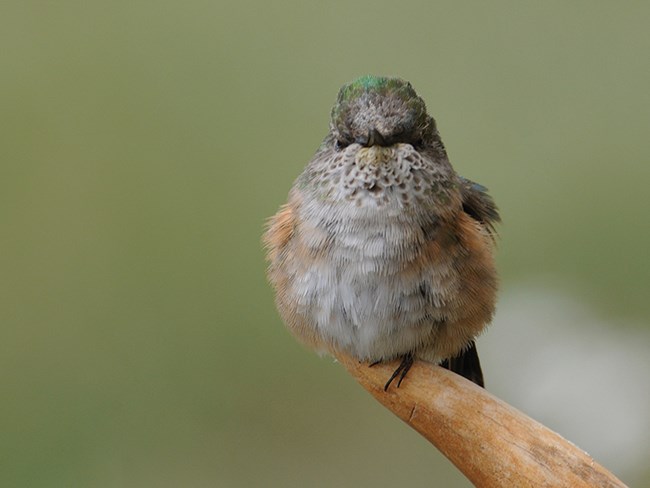
Photo by Sally King Wingspan 5.25" Very common all summer long until around Labor Day. Can arrive back very early in the spring, even before many flowers are blooming. Males have a bright red gorget while females have a speckled throat. 
photo by sally king 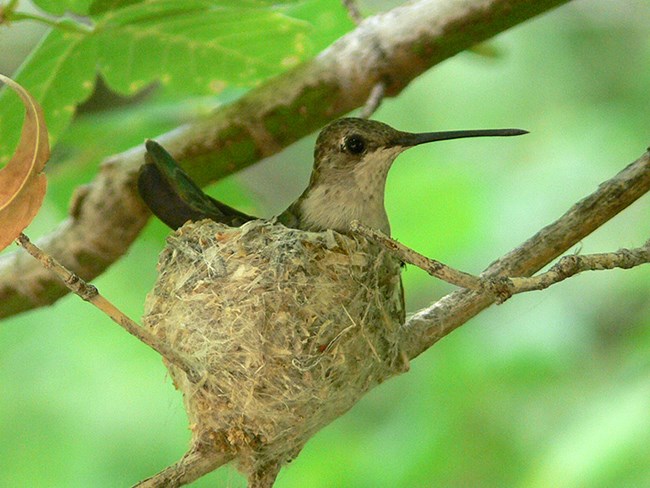
Photo by Sally King Wingspan 4.75" Very common. Nests and raises young in the park. Males have a dark purple or red gorget. Females are very plain with some green highlights in their plumage. 
photo by sally king 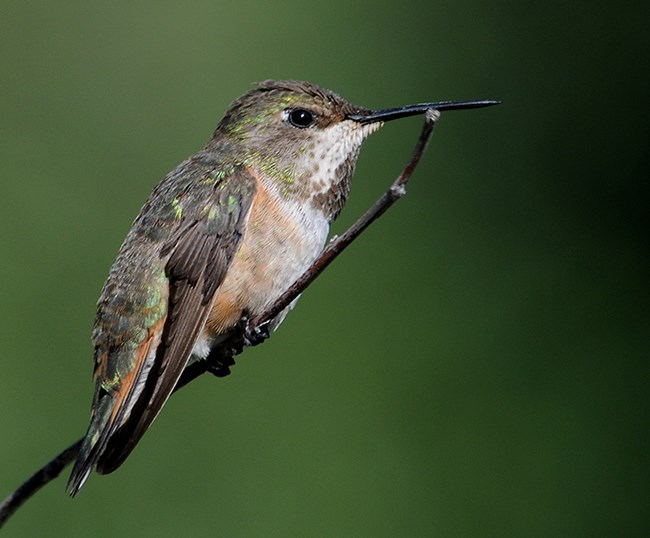
Photo by Sally King Wingspan 4.5" Common, especially in late summer during migration. Males are bright green and orange. Females have similar coloration but have a small medallion instead of a bright gorget. 
photo by sally king 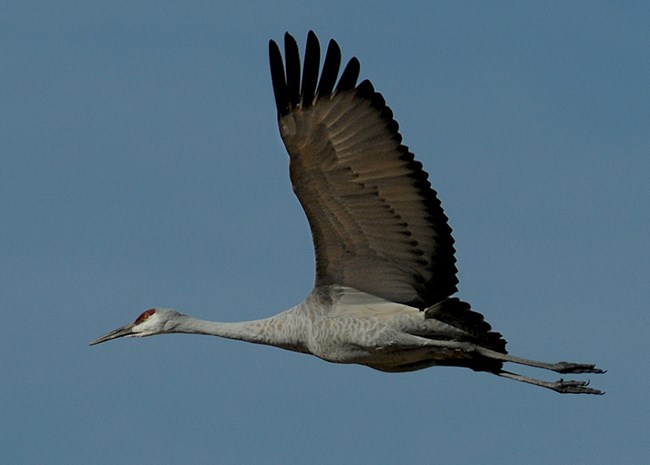
Photo by Sally King Wingspan 77 - 73" Rarely land in the park but make their presence known in both spring and fall when they migrate overhead. Their loud cries are very distinctive. 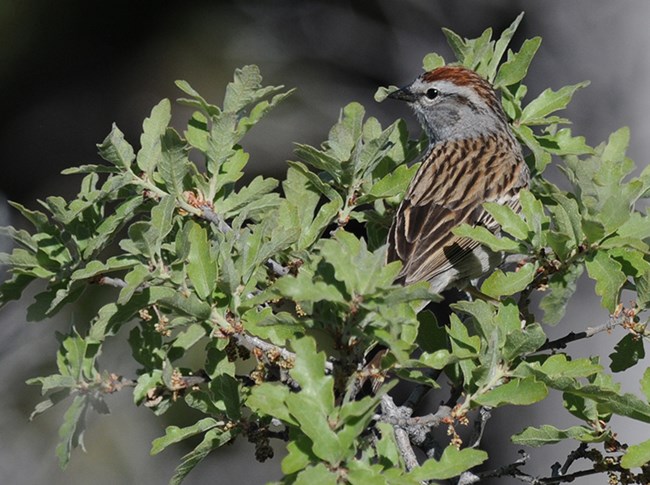
Photo by Sally King CHIPPING SPARROW (Spizella passerina) 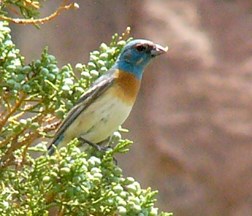
NPS Photo by Sally King Wingspan 8.75" Uncommon in the park overall but seen occasionally near the Rio Grande at the bottom of the Falls Trail. 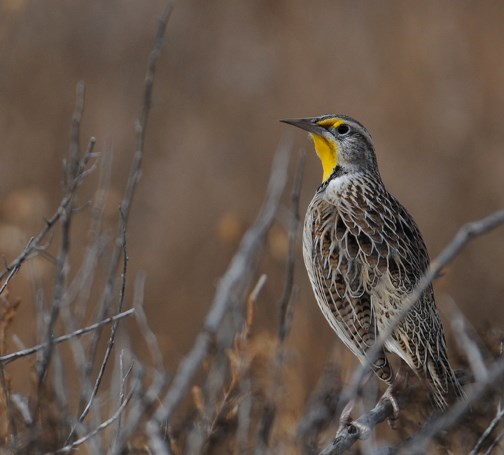
Photo by Sally King Wingspan 14.5" Uncommon but can be seen occasionally on the open, brushy mesas such as at Burnt Mesa Trail. 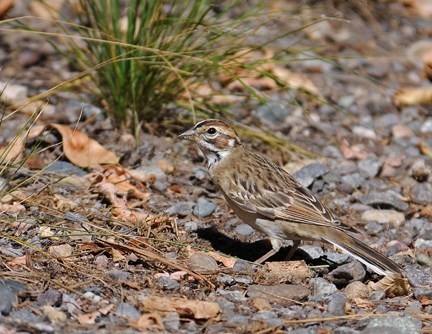
Photo by Sally King Wingspan 11" Somewhat common, have been seen along the Main Pueblo Loop Trail. Distinctive face pattern makes them easily recognizable. |
Last updated: April 28, 2025
